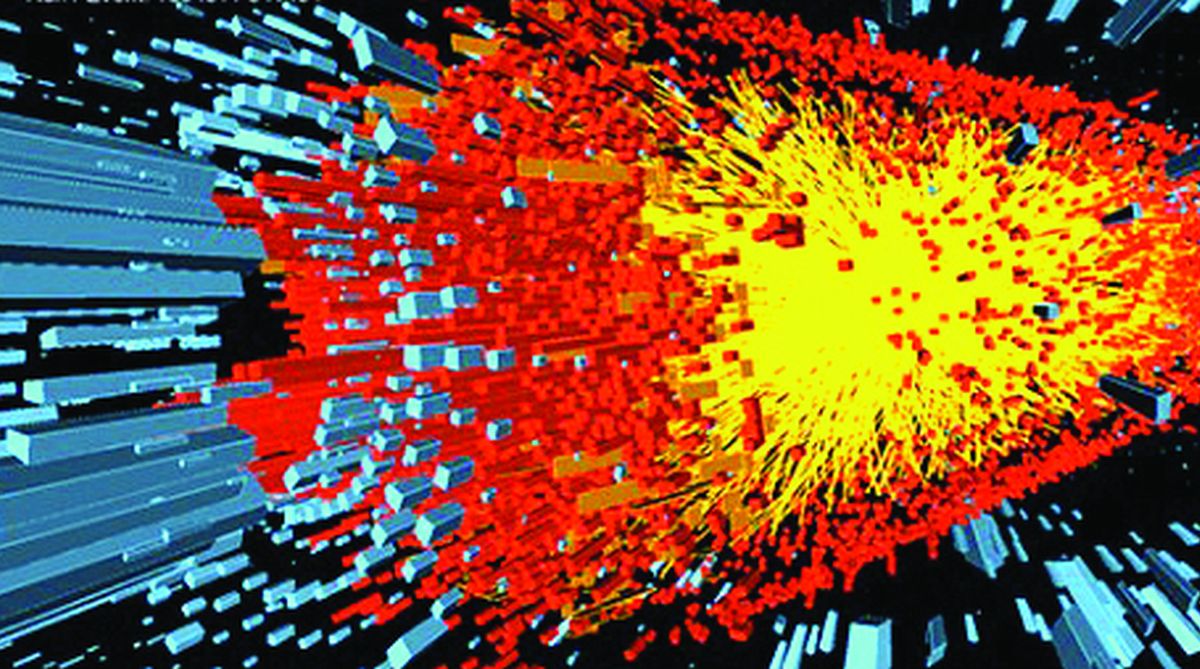Satyendranath Bose was a very different type of person but a great friend of Mahalanobis, and helped ISI greatly. Reclusive, very typical Bengali, he knew French and German apart from Bengali and English. He was a mathematician with tremendous insight into physical sciences including chemistry.
He kept company with poets Jishnu De and Sudhin Dutta, artist Jamini Roy, and his class mates Meghnad Saha and Mahalanobis. They were all students of Jagadish Chandra Bose. College Street with Presidency College and Science College was the hub of the brightest.
Bose and Meghnad Saha learned German to translate the famous paper of Einstein on General Theory of Relativity into English and published it in the Calcutta University Press. The introduction, written by Mahalanobis, is a marvel in scholastic style and substance, a brief history of Relativity.
Bose eventually settled at Dacca University and it is there that he wrote the path breaking equation on re-deriving Planck’s Law which led to the statistics of radiation carried by photons. Initially the paper was rejected by the Royal Society’s Philosophical Magazine.
But such was his confidence, he wrote to Albert Einstein directly. Einstein translated that paper into German and sent it to Zeitschrift für Physik with the following note: “In my opinion Bose’s derivation signifies an important advance. The method used here gives the quantum theory of an ideal gas…” and Bose-Einstein condensation was discovered.
Meghnad Saha, on a trip to Dhaka in 1924, pointed out that Planck’s derivation contained some ad hoc assumption which Satyen Bose could look into. The ingenious deduction of Planck Law by Bose lies in the mathematical derivation of number of cells in a phase space.
One can then proceed to fill up the phase-space by the number of quanta available, already used by Debye. Bose introduced the polarisation of photon, intrinsic spin or angular momentum ± h/2? (‘h’ is the Planck’s constant) of photon, and got a factor of two which Einstein insisted on striking off. The weight factor two thus arises from the possibility of the spin of the quantum being either right-handed or left-handed.
The inherent assumption of photon spin is implied. Thus in one paper Bose-Einstein statistics was discovered along with a loud hint of the existence of quantum spin. Bose spent quite a substantial part of his time from 1924 onwards on Chemistry and published some very significant papers. His second paper, “Thermal equilibrium in the radiation field in the presence of matter”, was brilliant; he himself thought so, but Einstein disagreed, and the paper did not get much exposure. This did not diminish Bose’s respect from Einstein, an almost perfect example of Eklavaya philosophy.
I met Satyendra Nath Bose first at our Kandi home in the early Sixties. I was at school and he came with his youngest daughter to inaugurate Vigyan Bhavan at the school founded by my forefathers over one hundred and fifty years before.
Originally, the idea was to establish a theatre but at the behest of Iswar Chandra Vidyasagar, their teacher, a school was established. It turned out that Bose was quite familiar with its history. It was the height of summer; after lunch he was expected to rest along with his daughter. The living pattern of that house was very rustic and frugal, the furniture consisted mainly of a huge bed, a small table and a few chairs.
We left him there and after about 3.30 or so in the afternoon, we knocked on his door. A grave voice suggested the door was open and we could come in. We entered to a strange sight. Satyen Bose had his body on the bed but the head with his mane of white air was hanging over the side as if he was looking at reality upside down. He said quite affectionately Ki re, Akghare Kare Dili. We were speechless. His daughter on the other side of the bed was fast asleep. He got up and the first thing he asked me was how I got burnt on my right arm.
There was no hint in his conversation that we were so young and he a world famous and celebrated scientist. The conversation was easy; he suggested that I put red water on my right arm and then he asked for hot water in a bowl to have a shave before the function. As a bit of beard was floating on the water with the soap, he asked me “Do you know why the bit of beard is floating?” I promptly replied, “Surface tension, Sir”. He said nothing but a wonderful smile flashed on his lips, Thik bolechis.
It was a glorious afternoon. He received tremendous affection and some of his former students, now teachers, came from Behrampur. Their respect for him was boundless. The memory of that incident I cherish even today. I met him many times later, mostly at his Iswar Mill Lane home. The affectionate and cultured human being wore his fame very lightly.
Lot of people suggest that Satyen Bose should have got the Nobel Prize, not once but twice, one for Bose-Einstein statistics leading to Bosons and another one for quantum spin. Yes, but in my opinion Bose achieved much more. Nobel Prize winners are soon forgotten but Bose will be remembered as long as civilization exists. Any fundamental particle with spin zero or one are named after him, Bosons; that is a fantastic feat.
(Concluded)
The writer is INSA Honorary Scientist, former Homi Bhabha Professor,
Department of Atomic Energy.











